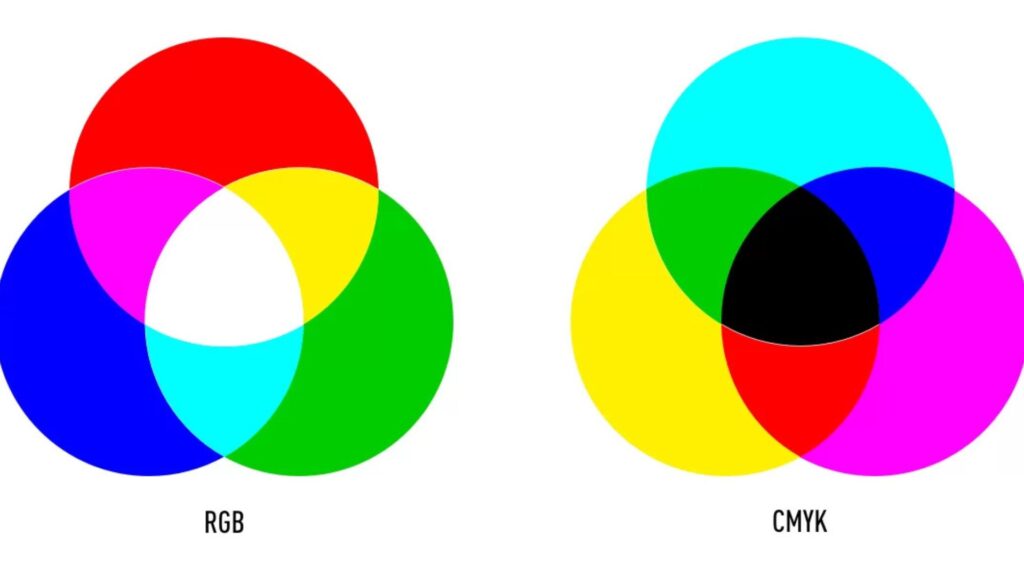
When working with digital images or preparing files for print, understanding color modes is essential. The two most common color models are RGB and CMYK, each serving different purposes in digital and print media. Choosing the correct color mode is crucial to ensure color accuracy, vibrant visuals, and professional-quality prints. Check out the key differences between CMYK vs. RGB in Printing.

What Is RGB?
RGB stands for Red, Green, and Blue, the primary colors of light. This color model is additive, meaning colors are created by combining varying intensities of these three light colors.
-
Used for digital screens: Monitors, smartphones, cameras, and TVs all use RGB.
-
Color Range: RGB has a wider color gamut, producing bright and vivid colors on screens.
-
Additive Process: Combining all three at full intensity creates white.
RGB Characteristics
-
Ideal for on-screen viewing.
-
Colors can appear more vibrant than in print.
-
Not suitable for direct printing because printers don’t emit light.
What Is CMYK?
CMYK stands for Cyan, Magenta, Yellow, and Key (Black). This subtractive color model is used primarily in color printing.
-
Used for printing: It’s the standard color model for printers.
-
Subtractive Process: Colors are created by subtracting light using inks. Combining all colors ideally produces black, but pure black ink is added for depth and detail.
-
Limited Color Gamut: CMYK has a narrower color range compared to RGB, which can affect the vibrancy of printed colors.
CMYK Characteristics
-
Essential for accurate color reproduction in print.
-
Each color is printed in layers of tiny dots to blend and form various hues.
-
Black ink (K) is used for sharp text and deeper shadows.
Why the Difference Matters in Printing
Color Conversion
When preparing digital files for print, RGB images must be converted to CMYK. This conversion can alter colors because some bright RGB colors cannot be reproduced exactly in CMYK.
-
Soft Proofing: Graphic designers often use soft proofing tools to simulate how RGB colors will look when converted to CMYK.
-
Color Shifts: Vivid blues, greens, and oranges may appear duller or muted in print.
Ensuring Color Accuracy
-
Start your design in CMYK mode if the final output is print.
-
Use Pantone or spot colors for precise color matching.
-
Communicate with your printer to understand their color profiles and requirements.
When to Use RGB or CMYK
| Purpose | RGB | CMYK |
|---|---|---|
| Digital Displays | Ideal for screens, websites, apps | Not used |
| Printing | Needs conversion before printing | Standard for all print jobs |
| Color Range | Wider, more vibrant | Narrower, print-optimized |
| File Preparation | Suited for digital artwork | Best for brochures, magazines, packaging |
Tips for Working with CMYK and RGB
-
Design for the Medium: Always design in the color mode that matches your output.
-
Check Color Profiles: Use ICC profiles to manage colors consistently across devices and printers.
-
Proof Before Printing: Request printed proofs to verify color fidelity.
-
Use High-Quality Images: Ensure images have sufficient resolution and correct color mode.
Conclusion
Understanding the difference between RGB and CMYK in printing is essential for achieving the best color results in your projects. RGB excels in digital environments with vibrant colors, while CMYK is tailored for accurate color reproduction in printing. By choosing the correct color mode and preparing files carefully, you can avoid unexpected color shifts and ensure your printed materials look professional and true to your vision.







